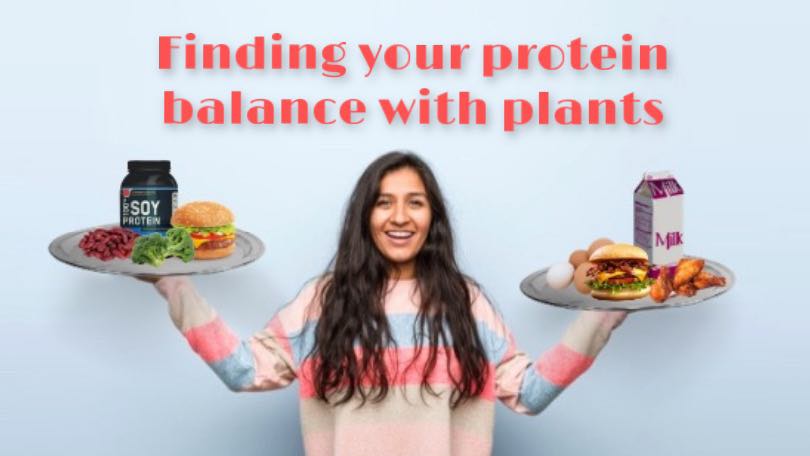Plant Protein: Part 2
Not a new source, and hopefully not a trend
Seeking out plant protein is not a new concept, many cultures practice vegetarian diets, and for a large portion of the world, individuals cannot afford animal-sourced protein. While the majority of individuals in the developed world are omnivores, alternatives in the market for meat or animal protein foods are not new, but merely experiencing growth in selection availability. This growth in ‘alternative’ protein selection, particularly in the prepackaged/processed foods, is both a welcome addition, as well as just another label that may confuse consumers.
The growth in plant protein products is a sign that consumers both want and like these products. New food processing techniques have improved the products and better pricing strategies are helping to capture more of the market. As explained by Dr. Bob Tyler at the AWB meeting this summer, the Beyond or Impossible products are not the first attempts at simulating meat but are perhaps one of the more successful so far. In 1937, the first soy-burger was released, which didn’t have much flavour. The soy and bean style ‘meatlike’ products to follow were not very meat-like, nor known for being overly flavorful to anyone, despite efforts like the Boca Burger. By the 1990s, food scientists made improvements to veggie and tofu products as alternatives to traditional meat products. Today, food scientists have proven you can make processed plant proteins that both taste like meat and don’t taste like meat, but still, offer great flavour and texture.
Confused by what is healthy
All these plant protein options are great, but with the hubbub of different types of diets and what to look for on labels, these products have not helped to reduce my confusion as to what is healthy. Especially with the growing number of processed plant protein products or what different protein options restaurants now offer. While I can’t decipher from the food nutritional labels what is best for your health, I will point out that with each available option there will be benefits and tradeoffs. For instance, let’s say on your way home tonight you stop for a burger at your local fast-food chain, A&W, only now you notice you have 3 comparable options to pick from. Your options are between a Mama Burger (beef, with and without cheese), a Veggie Burger, and the new Beyond Burger. Since its’ A&W, you know they will all be delicious, so you decide to look at the nutritional value to find your ‘healthiest’ option.

Source: A&W, 2019
If you’re choosing based on nutritional values, you’ll select based on your preference and dietary needs. So if you’re wanting a cheeseburger it’s between a ‘Mama’ with cheese or a Veggie burger, or you can cut calories and choose a ‘Mama’ with no cheese or go with the Beyond option. What you notice from above however is that a universally healthy option does not exist. With each burger, there are tradeoffs made to produce both great texture and flavour. A burger needs the right texture, which may mean the addition of a binding agent to get the right chew, this could be achieved with the addition of fats or carbohydrates. What about flavour? To induce those taste buds fats and salts are effective and cost-efficient ingredients.
Knowing all this, you look to the nutritional information and see that the ‘Mama’ beef option w/o cheese is the lowest in calories, total fats, and sodium. But if fibre is important and not having that ‘meaty’ flavour and texture, the Veggie is your only true option. Whereas the Beyond burger is higher in sodium and calories, it has no trans fats, the least saturated fats of all the burgers, 1/10 the cholesterol of the ‘Mama’ alternate option and 3 g more protein.
Are you confused yet? The truth is, most of us won’t be going to a fast food joint to seek out our healthiest option, you choose what is tasty, fast, and worth your money, whatever option that might be. It seems you can’t go wrong with any of the above options.
Finding your right balance of plants
Whatever your reason for seeking out plant proteins in your diet, they offer a great source of protein and nutrition. Whether you are eating a completely sourced plant protein diet or trying to reduce your meat consumption, it’s all about finding the right balance. There are lots of plant protein recipes, diets, products and supplement powders out there, but it’s about finding the necessary balance. As mentioned earlier in this series #talkingprotein, we require 9 essential amino acids in our diet, however, a single plant doesn’t offer significant amounts all 9 amino acids in a complete package, so you need to seek out different plant sources to achieve your required proteins. If you’re eating a non-animal source diet, it might be a bit more work to ensure you’re getting your required proteins, as shown in the previous blog, but as long as it tastes good, and you’re happy with your plate, a little work hurt no one. Whether you intended to or not, you were already sourcing protein from plants, so keep this in mind when finding you right balance of protein.


